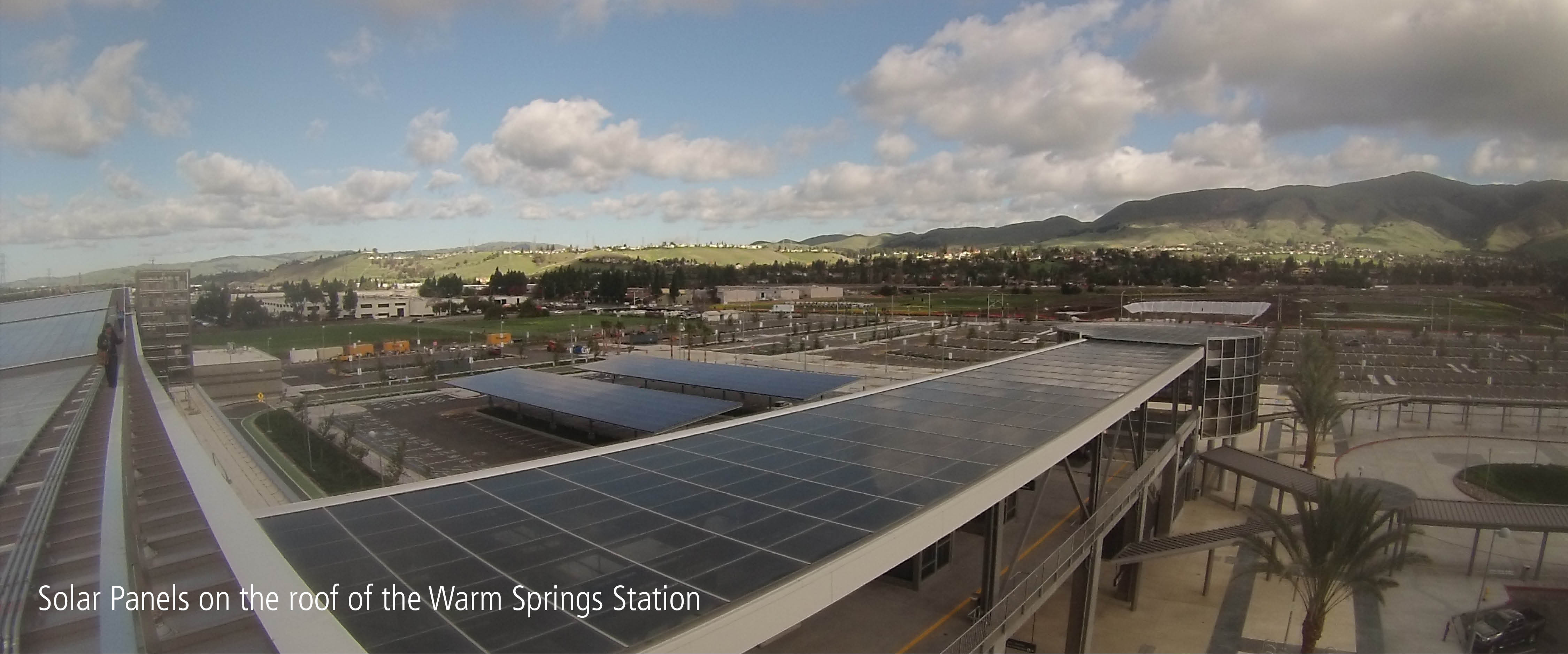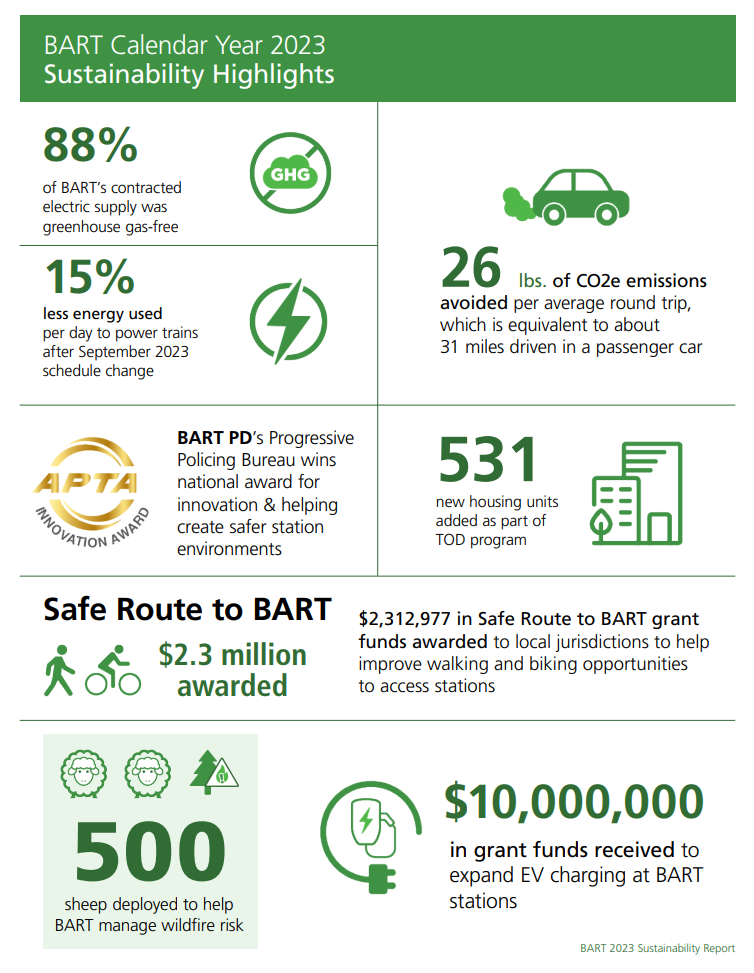
Sustainability at BART is both what BART does and how BART does it
What BART Does
BART carries approximately 156,000 passengers on a typical weekday (as of calendar year 2023). BART’s daily riders save nearly 31,000 gallons of gas and directly reduce CO2e emissions by over 600,000 pounds per weekday.
By providing accessible transit, BART helps people rely less on cars for their daily needs and encourages dense, mixed-use development. The compact, walkable communities made possible by BART support healthy lifestyles, and reduce transportation costs for its riders.
How BART Does It
BART is committed to advancing regional sustainability by providing safe, affordable, equitable, and environmentally-friendly transit to move people to jobs, recreation and services. BART incorporates cost-effective sustainability through fulfillment of the goals found in the Sustainability Policy.
Use the menu to navigate to different pages and learn more about our sustainability goals.

BART riders get the equivalent of 83 miles per gallon
A typical car gets about 23 miles per gallon. A BART rider gets the equivalent of about 83 miles per gallon. On average BART is over three times more efficient than a typical car driven alone (on a passenger-miles per gallon basis of comparison).
- Calendar year 2023 average number of weekday trips: 156,015
- Average trip length: 15.39
- Gallons of gas saved by avoiding driving (round trip): 1.3 gallons
- CO2e avoided in one average round trip: 25.8 lb. CO2e
An even more energy efficient future
BART’s Fleet of the Future trains are electric and will offer a variety of sustainable features that reduce energy use and pollution:
- Lightweight aluminum exterior reduces energy use and the aluminum can be recycled when the trains cars are eventually retired.
- White roofs reflect heat and reduce the load on the interior cooling system.
- LED lighting reduces energy use.
- Seats are 74% recyclable by weight.
- Space is dedicated for bikes.
View Sustainability Polices, Plans & Reports
View details about our energy use
Learn about our energy procurement
Learn about our green buildings and infrastructure
Learn about electric vehicle charging
Learn about our water use